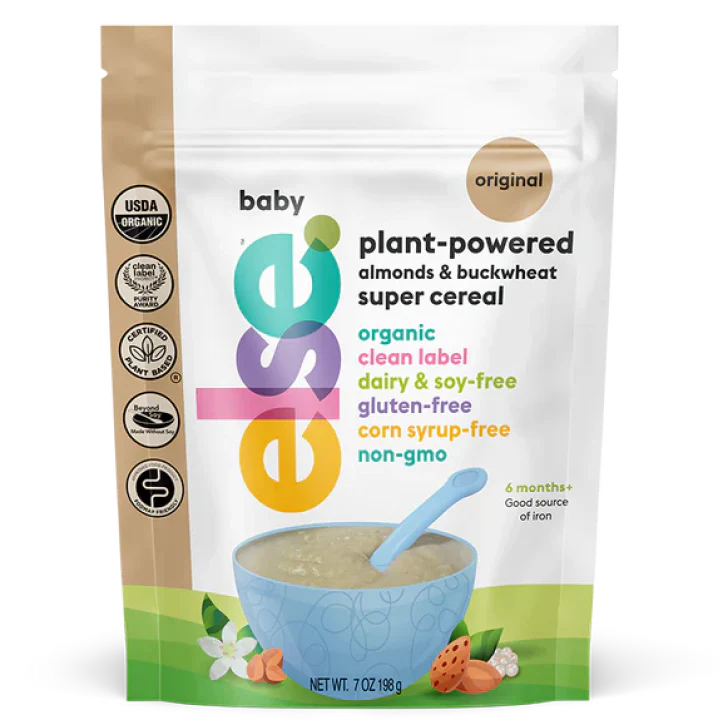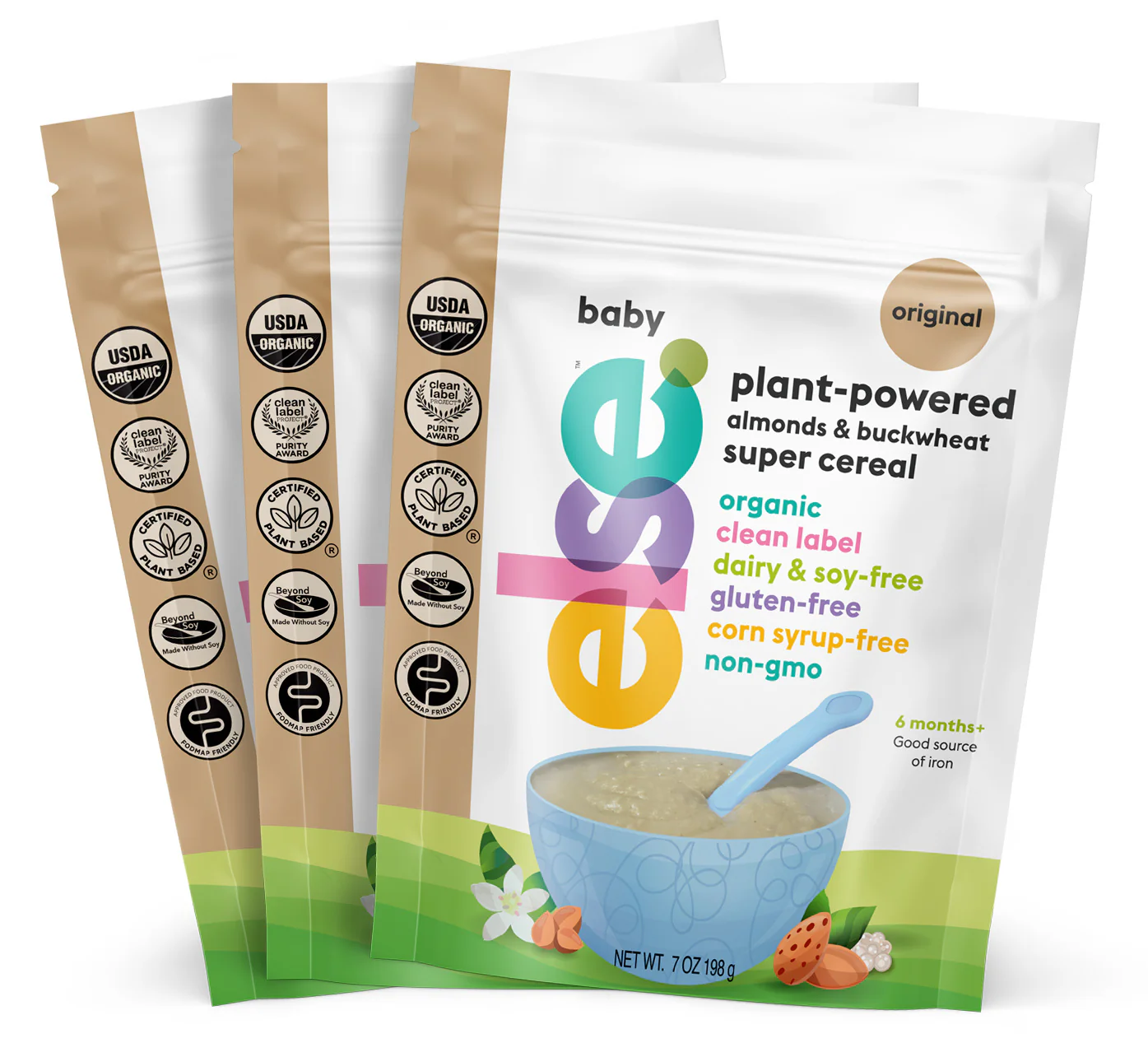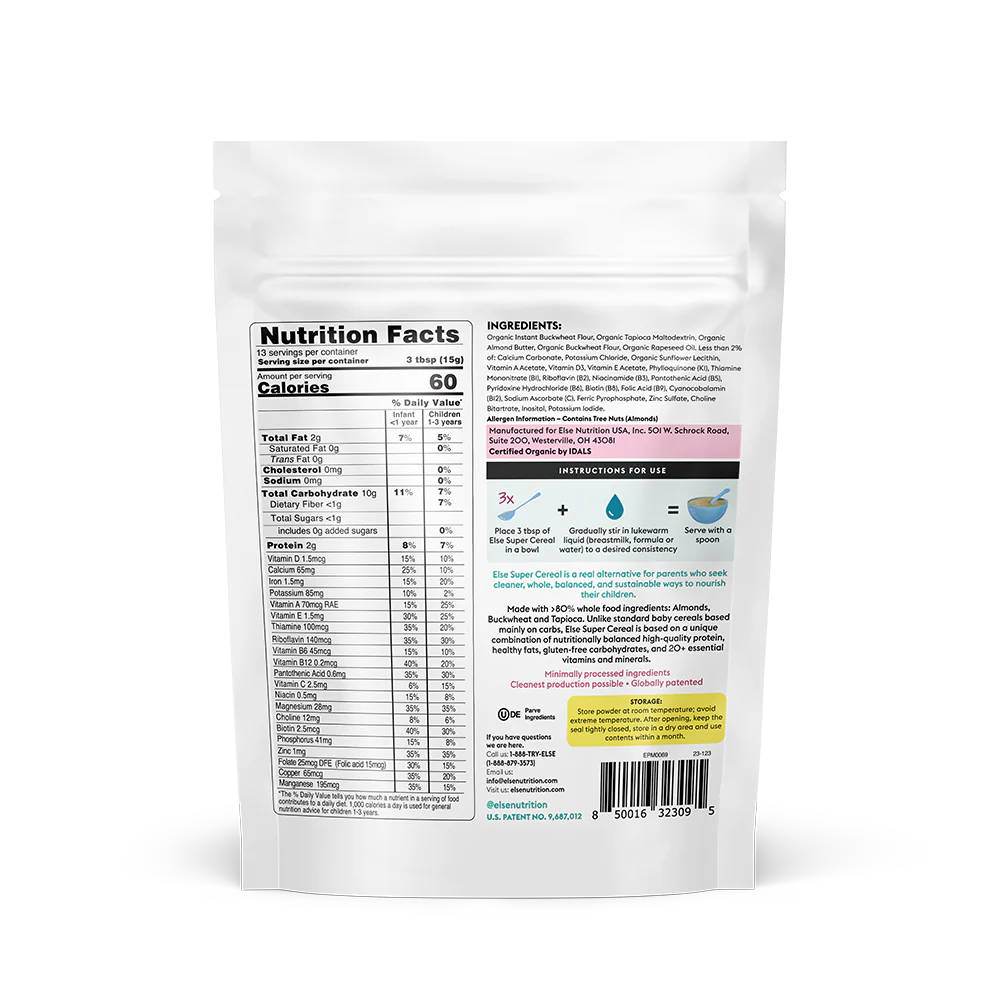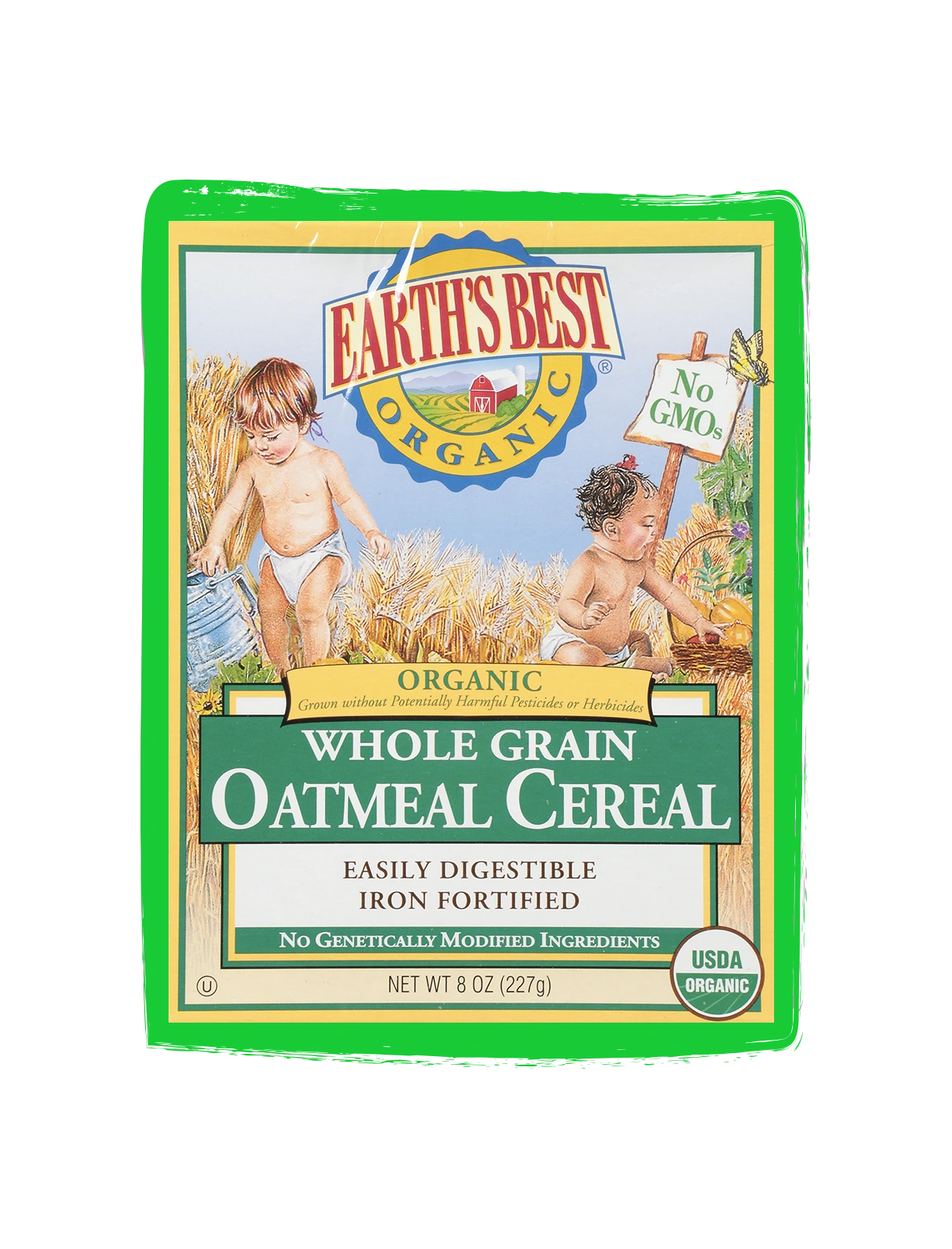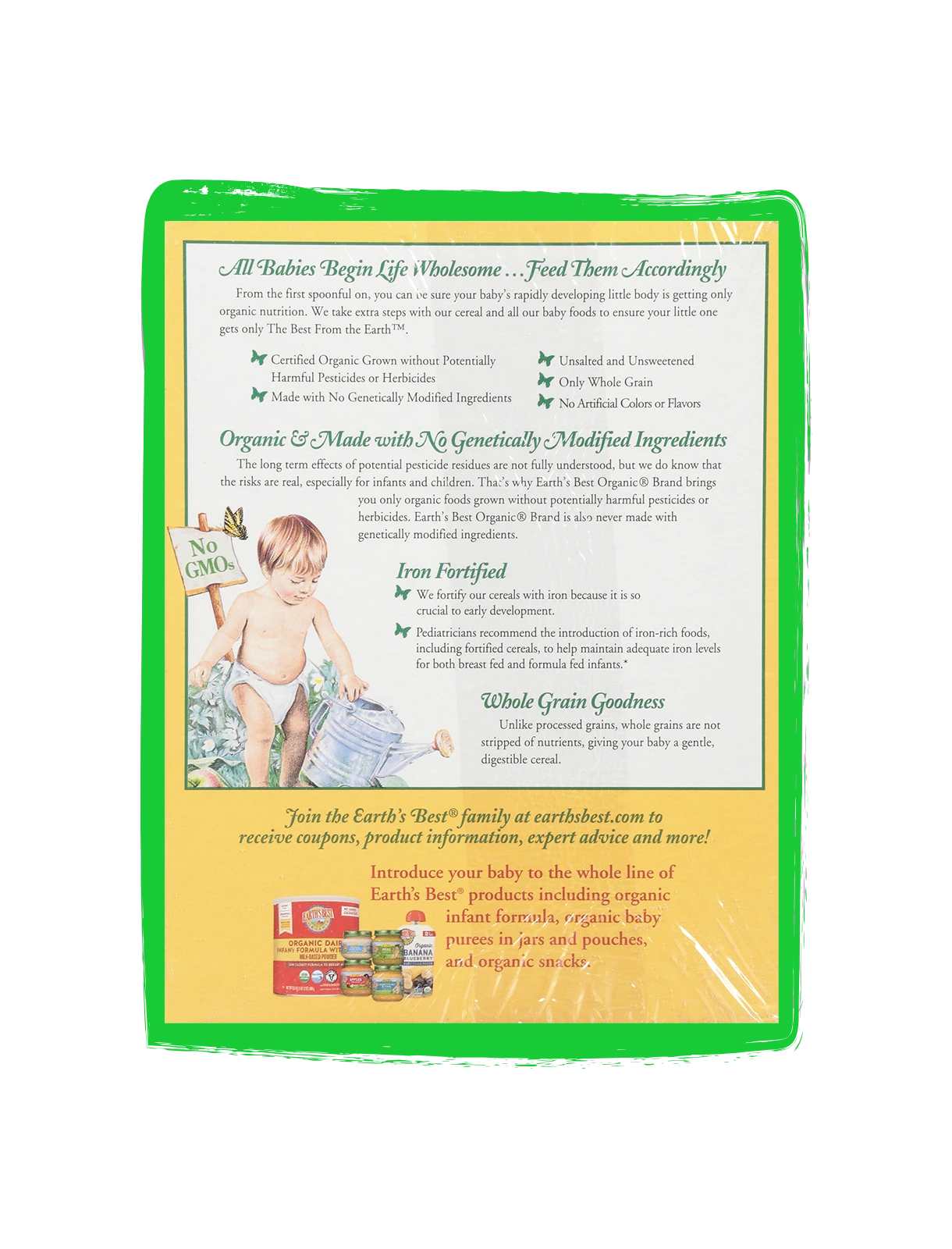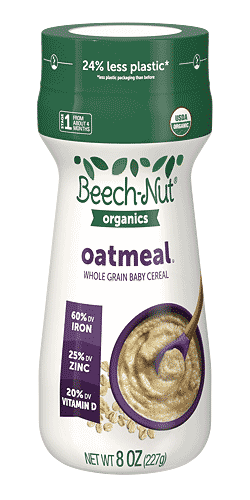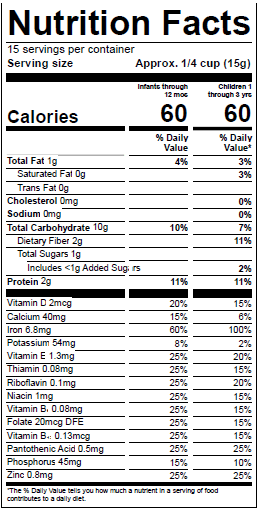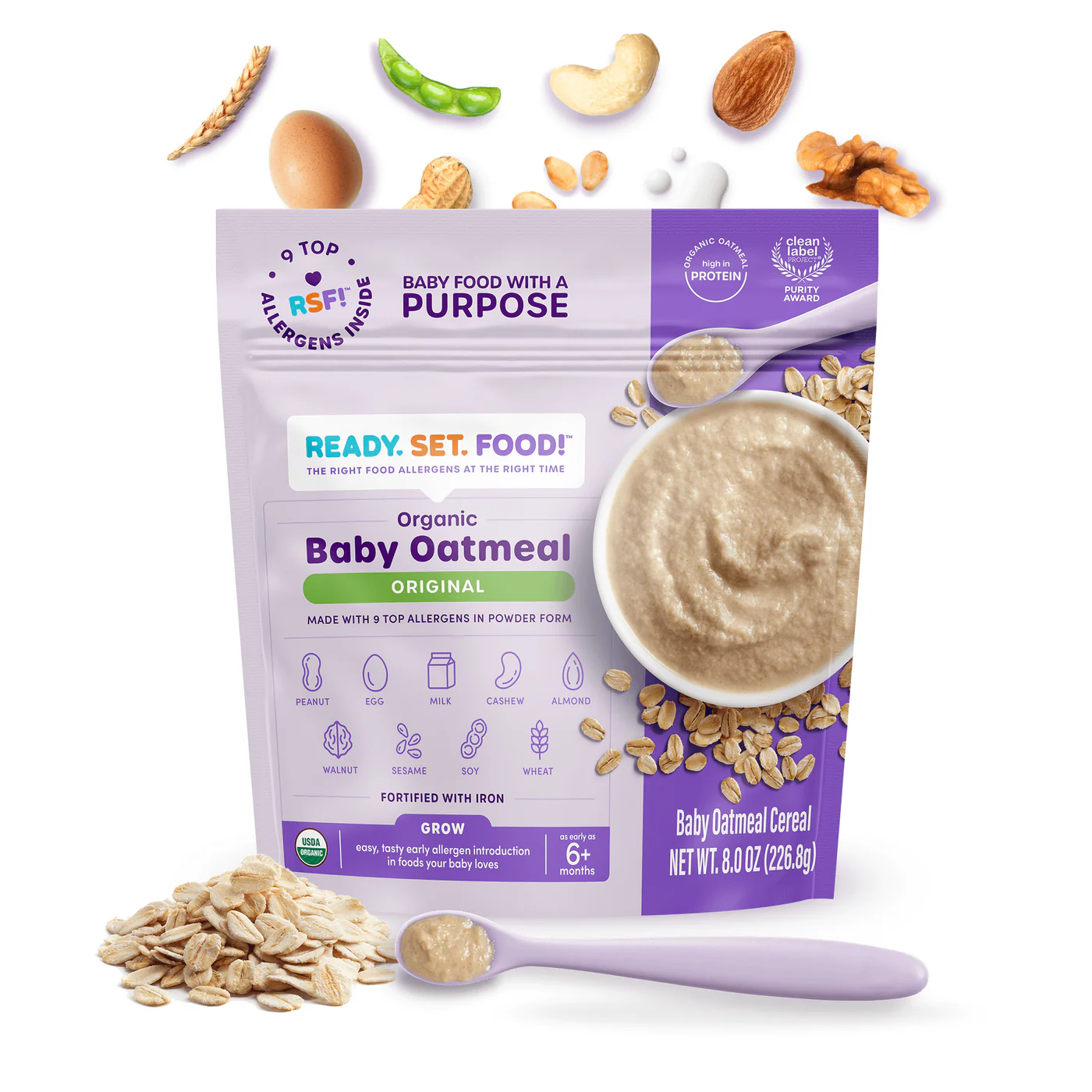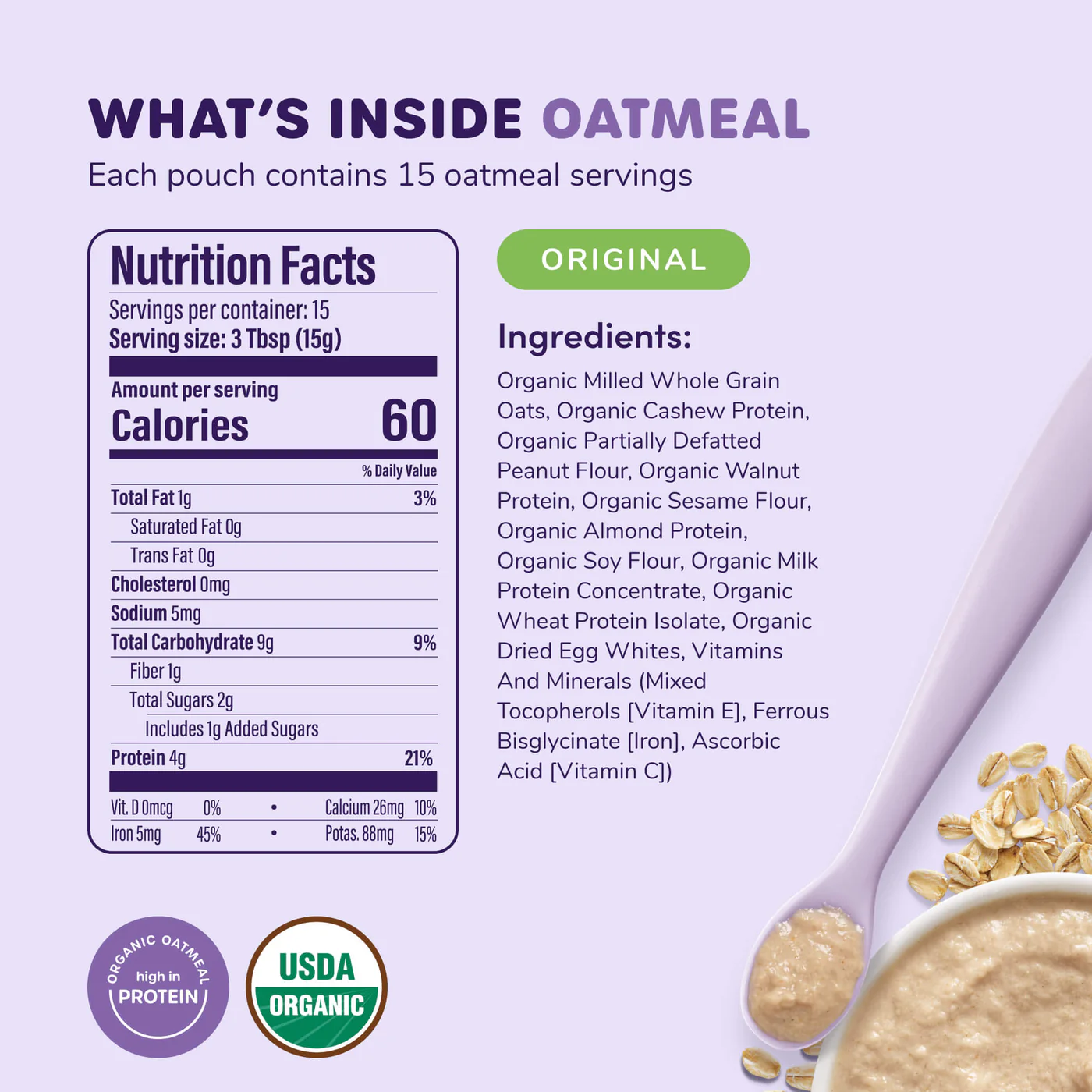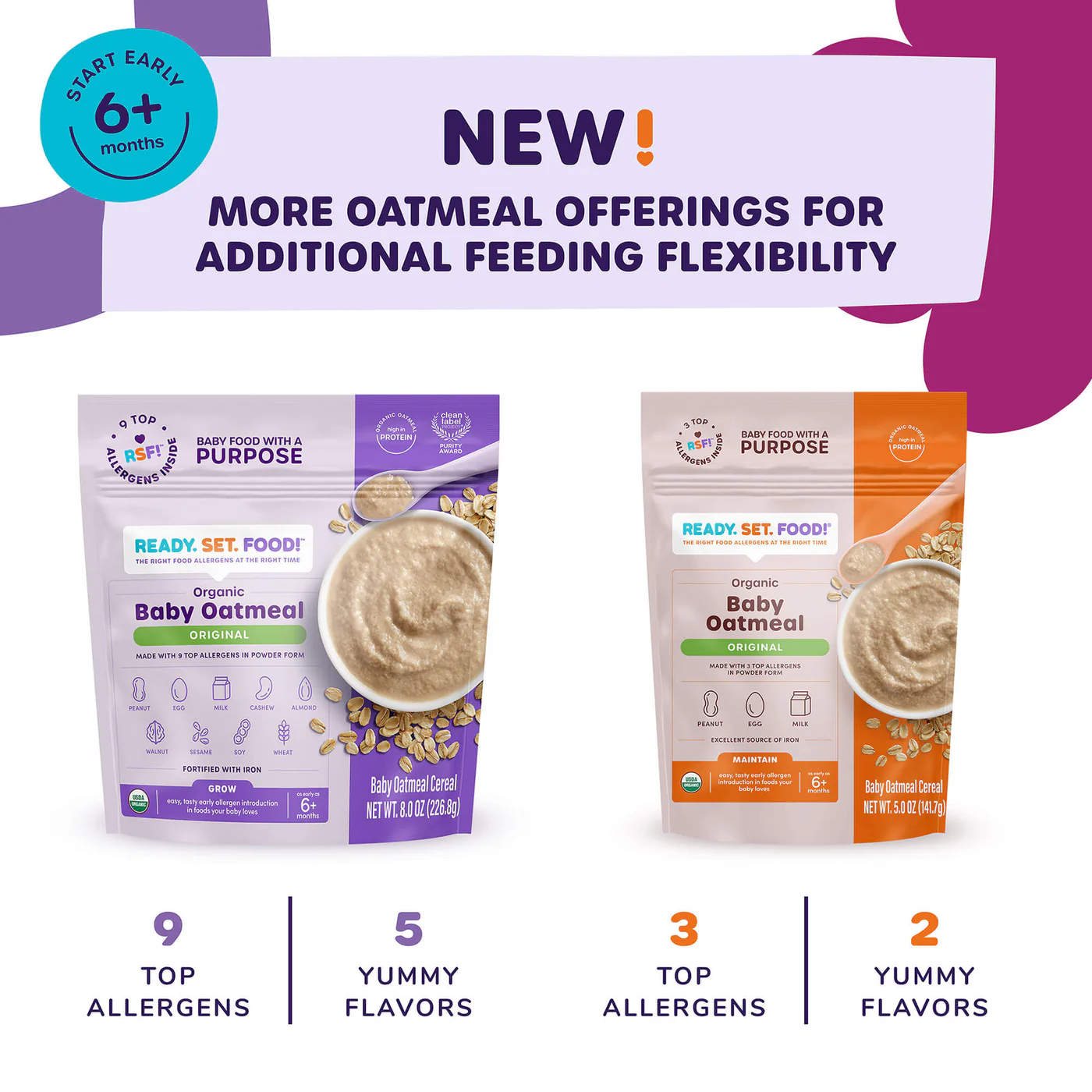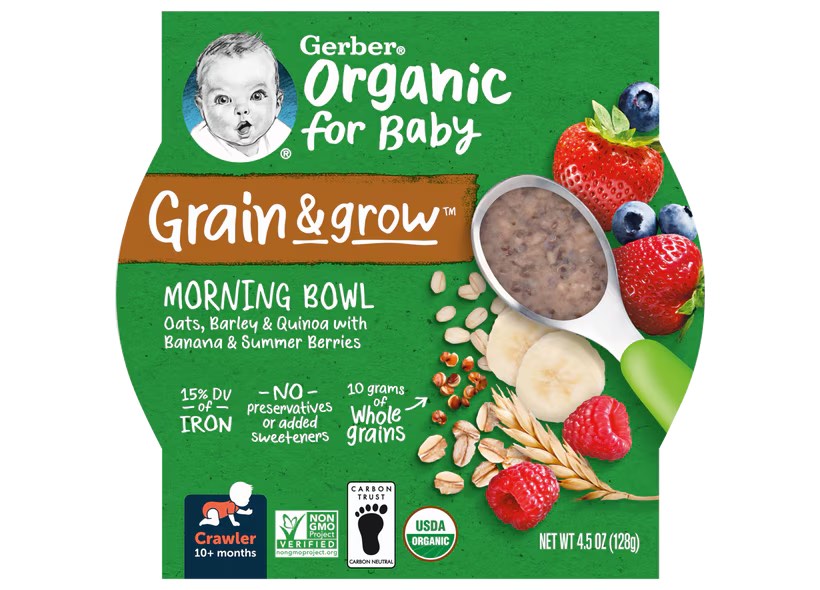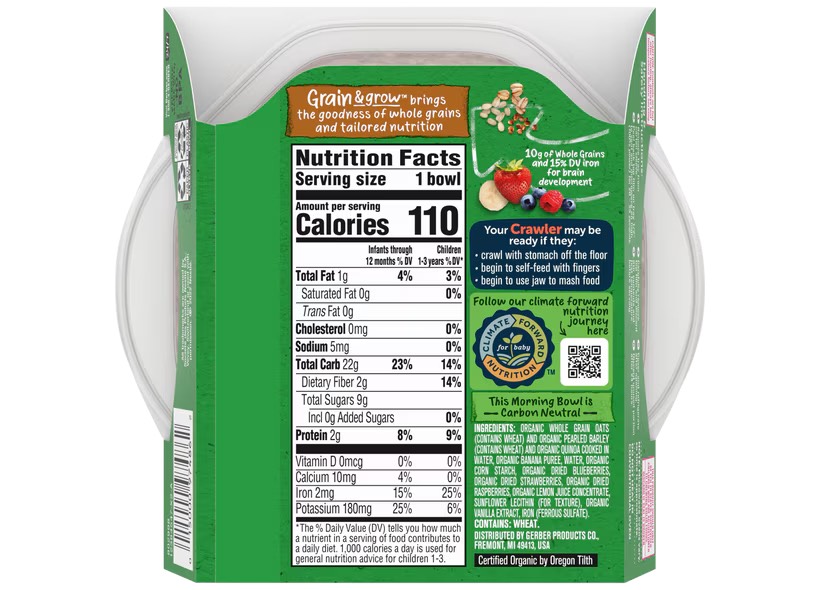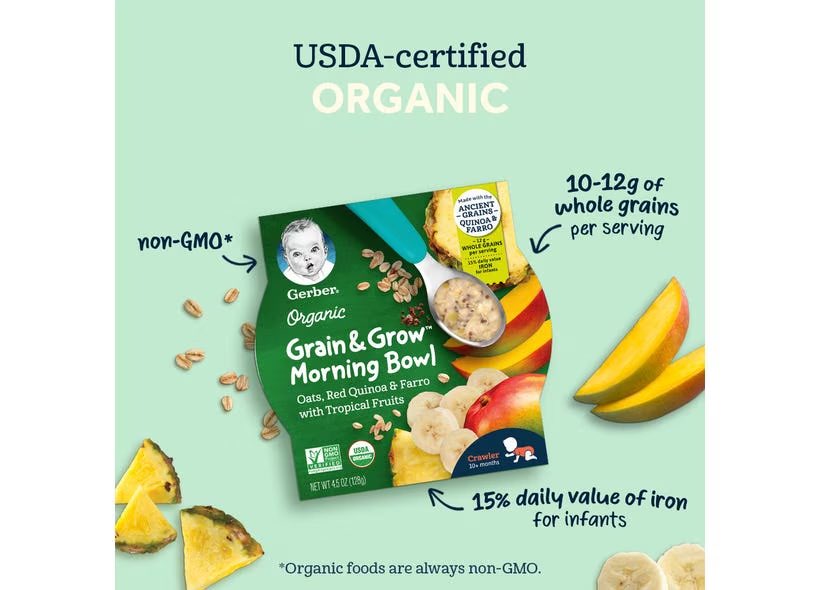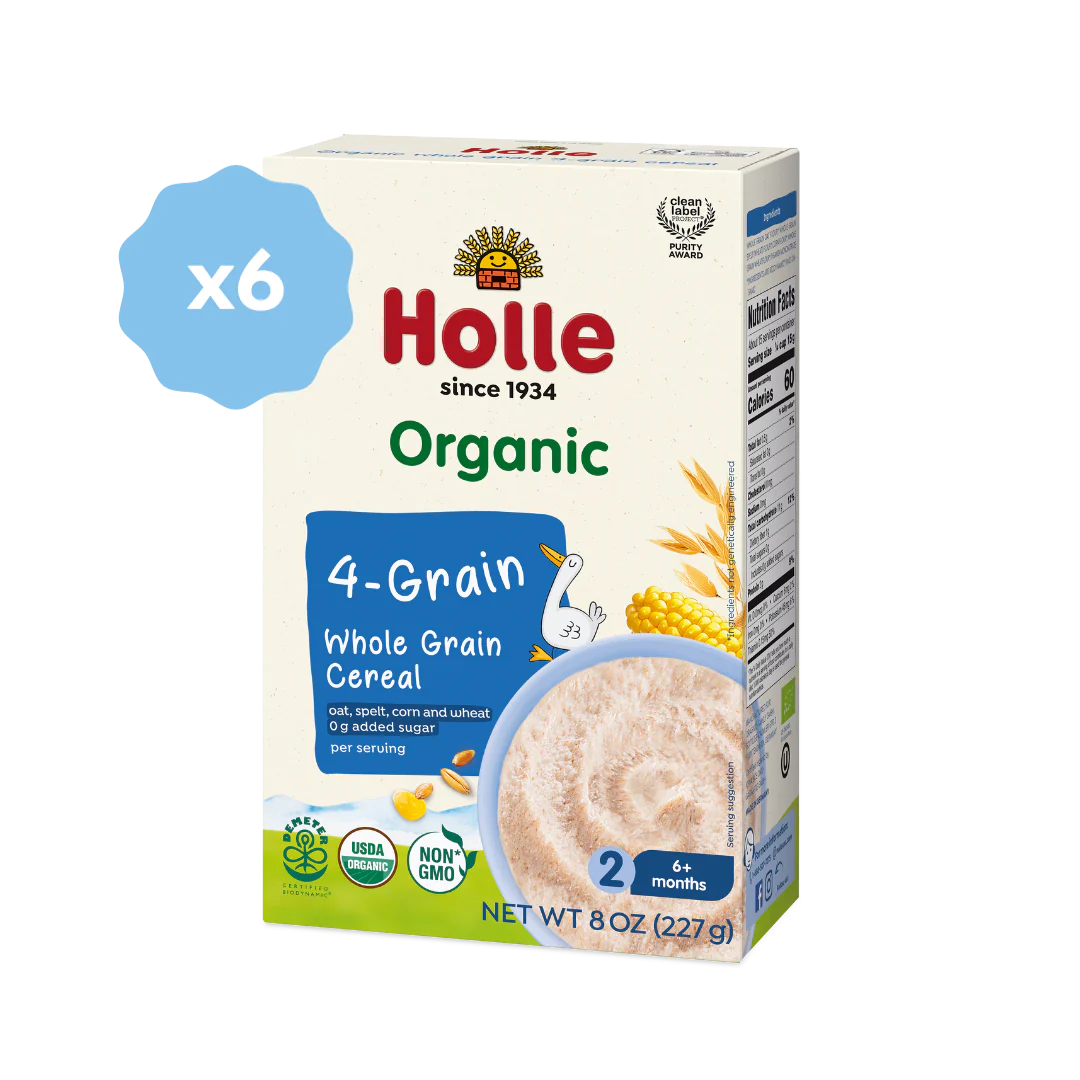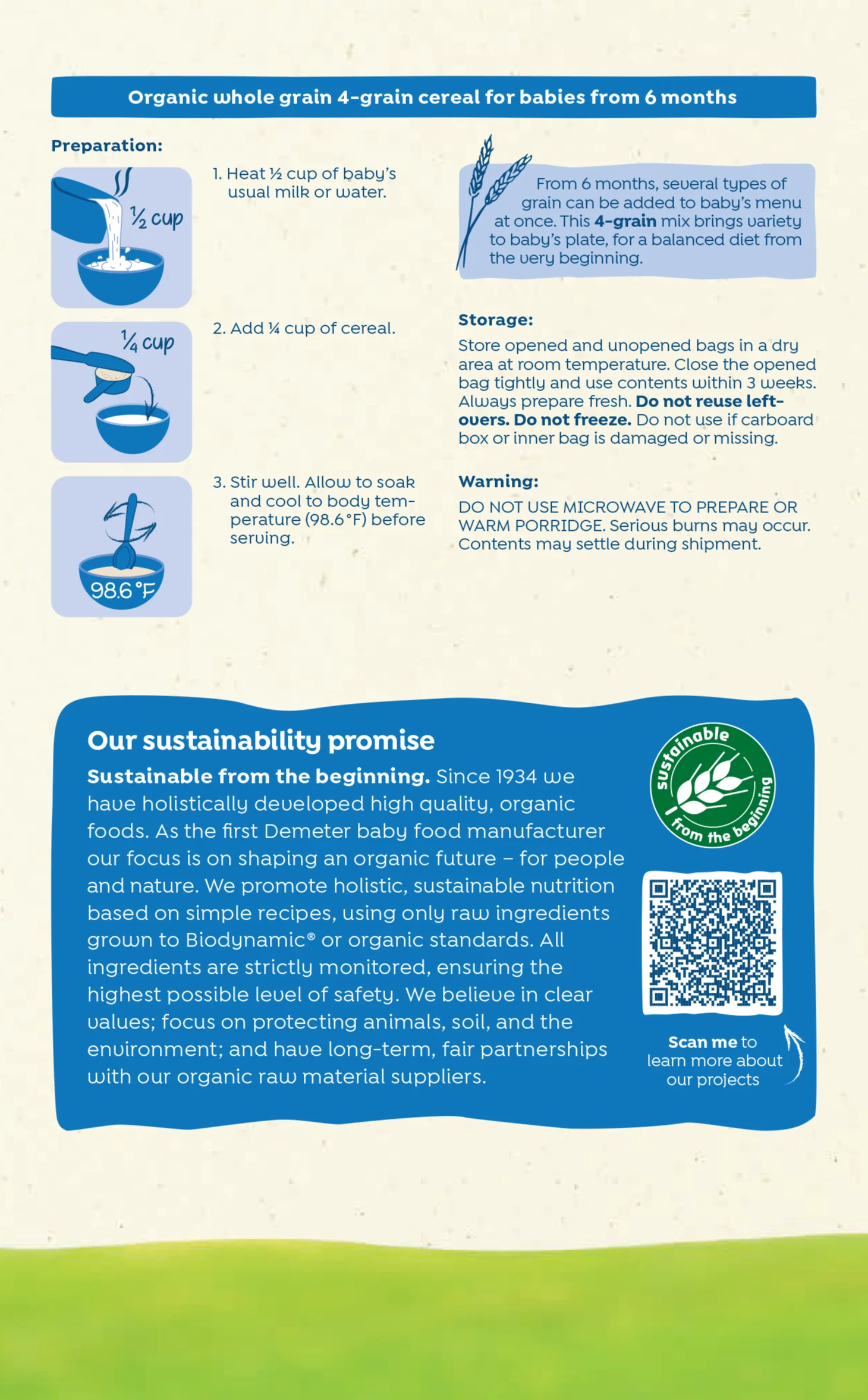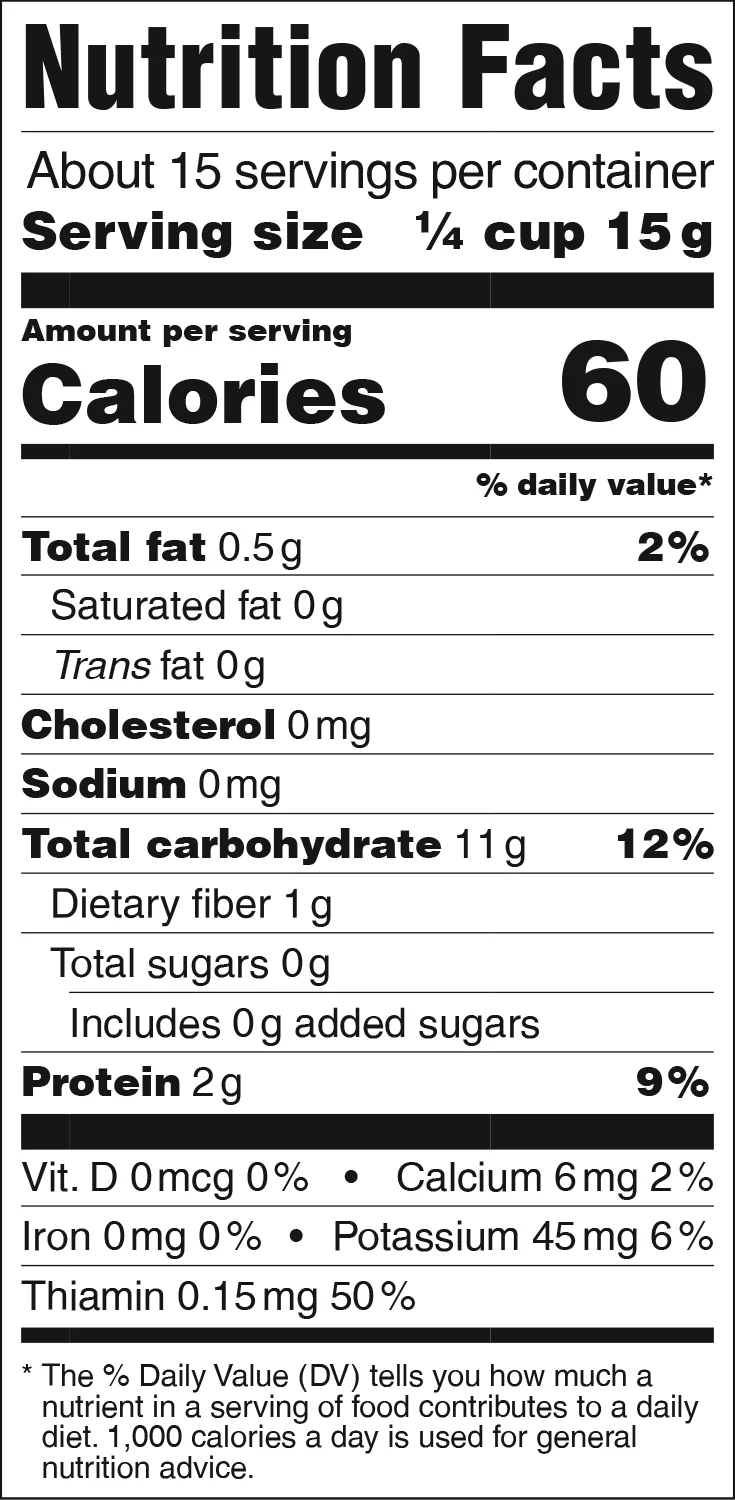6 Best Organic Cereals for Infants: Clean, Healthy Choices
Clean eating for tiny tummies: Choosing the best organic cereals for infants
Updated July 22, 2024

As your precious little one reaches around six months old, the exciting journey of solid foods begins! This milestone marks a shift from breast milk or formula to a new world of tastes and textures.
Cereals are a popular choice for introducing solids because they're easily digestible, often fortified with essential nutrients, and can be mixed with breast milk or formula for a familiar and comforting first meal. But when it comes to cereal selection, a question arises—organic or regular?
» Switching to solids? Keep it organic with Else Nutrition Baby Super Cereal
Our Pick: 6 Best Organic Baby Cereals
- Best organic infant cereal overall: Else Nutrition Baby Super Cereal
- Best organic infant cereal for sensitive stomachs: Earth's Best Organic Whole Grain Oatmeal Baby Cereal
- Best hypoallergenic organic infant cereal: Beech-Nut Organics Oatmeal Cereal
- Best organic infant cereal for immune support: Ready Set Food Organic Baby Oatmeal Cereal
- Best organic infant cereal for on-the-go: Gerber Organic Grain and Grow™ Morning Bowl
- Best budget-friendly organic infant cereal: Holle Organic Whole Grain Baby Cereal
» Check out these tips for teaching your baby to chew
Why Choose Organic Cereal?
There are several reasons why parents might choose organic cereal for their babies:
- Less Chemical Exposure: Organic certification prohibits synthetic fertilizers and pesticides during growing. While conventional cereals meet safety standards set by regulatory bodies, parents prefer to minimize potential exposure to these chemicals.
- Increased Nutrient Density: Organic crops might have slightly higher levels of certain antioxidants and minerals than conventionally grown crops. This could be due to the use of organic fertilizers, which promote soil health and enhance nutrient uptake by plants.
- Cleaner Label: Organic cereals often contain fewer additives, preservatives, and artificial ingredients than conventional options. This can appeal to parents who want a simpler, more natural product for their babies.
- Supporting Sustainable and Ethical Practices: Organic farming often emphasizes practices that promote soil health, biodiversity, and animal welfare. Parents who value these principles might choose organic cereals to support companies that align with their beliefs.
» Follow these tips for a gentle transition from breastfeeding
6 Best Organic Cereals for Infants
What to Look for When Choosing a Cereal
Selecting the right cereal is crucial when introducing solids to your baby. Here's what to keep in mind:
- Easy Digestion: A top priority is a cereal that's easy to digest. This helps prevent stomach upset or irritation, which is especially important for a baby's developing digestive system. Single-ingredient cereals are a good option here, as they're less likely to cause problems.
- Recognizable Ingredients: Look for a short ingredient list that you understand. If there are unfamiliar ingredients, choose another cereal. This will help you know exactly what you're feeding your baby and reduce the risk of potential allergies.
- Considering Allergies: If your baby has known allergies, choose a cereal that completely avoids those allergens to prevent allergic reactions. Single-ingredient cereals are, again, a good starting point, as they're less likely to contain hidden allergens.
- Easy Preparation: To avoid a cranky baby, opt for quick and easy cereals. Look for options that require minimal mixing or fuss, saving you precious time.
- Palatable Flavor: While nutrition is important, taste matters too. Experiment with different options to find one your baby likes. Start by mixing the cereal with breast milk to create a familiar flavor.
» Learn more about introducing whole foods to your baby
Tips for a Smooth Transition to Cereal
When introducing solids to your baby, it's essential to be patient and find what works. Here are some tips that can help:
- Age: Ensure your pediatrician approves starting solids, typically around six months old.
- Texture: Begin with single-grain cereals like rice, oatmeal, or barley, mixed to a smooth consistency with breast milk, formula, or warm water. Gradually thicken the cereal as your baby gets used to it.
- Temperature: Many babies prefer warm food. Heating the cereal with warm water, breast milk, or formula can make it more appealing.
- Flavor: Some babies might enjoy a hint of sweetness. Consider adding a bit of pureed fruit like apple or banana.
- Interaction: Make mealtime enjoyable. Talk to your baby, sing songs, and encourage them to explore the new texture.
- Signs of Fussiness: If your baby rejects the cereal, they might not be hungry, dislike the taste, or have trouble swallowing the texture. Be patient and try again later.
- Tummy Troubles: Watch for signs of gas, constipation, or diarrhea. If this happens after introducing cereal, try a different brand or consult your healthcare provider.
» Take a comprehensive look at alternatives to baby formula
A Smooth Start with Solid Foods
Introducing cereal is a big step for your little one, but it doesn't have to be stressful. Following these tips can create a smooth transition filled with positive experiences.
When choosing a cereal, organic options like Else Nutrition's Baby Super Cereal offer peace of mind. Made with the cleanest ingredients, Else provides a safe and healthy foundation for your baby's journey with solids.
Its easy-to-use formula, suitable for six months, is gluten, soy, and dairy-free, minimizing the risk of allergic reactions.
» For a nutritious and organic start to solid food, try Else Nutrition Baby Super Cereal
The content and advice provided in this article are for informational purposes only and are not a substitute for medical diagnosis, treatment, or advice for specific medical conditions.
Always consult a pediatrician to understand your child's needs. The article expresses the views of the article's editor.







